#budget hiking backpack
Text
Chilling out in Chile

View On WordPress
#Antarctica#backpacking#best things to do in#budget travel#Chile#Chiloe islands#hiking#how to get to#Patagonia#Puerto Natales#Punto arenas#Santiago#travel blog#Valparaiso
2 notes
·
View notes
Link
Love to explore new places? Visit The Eager Traveler today to get the best Travel tips & recommendations from experts! We will give you the right suggestions on travelling as per your fitness level, age or skill.
#Travel tips & recommendations#Backpacking guide for beginners#Destination guide Santa Maria Valley#Destination guide Carmel#Camping guide Joshua Tree#World travel guide#Thailand travel guide#Hiking adventures Washington#Best vacation destinations#Backpacking in Europe#California adventure tips#backpacking Southeast Asia#Female travel bloggers#Travel photography blogs#Europe travel blog#Travel blog & adventure news#Budget travel guide Europe
1 note
·
View note
Text
#Travel#Adventure#Wanderlust#Destination#Explore#Backpacking#Journey#Trip#Tourism#Itinerary#Tips#Guides#Budget travel#Solo travel#Family travel#Luxury travel#Off the beaten path#Experiences#Culture#Photography#Food#Packing#Accommodation#Activities#Local#Road trip#Hiking#Beach#Wildlife
0 notes
Text
Where is your #1 Favorite Travel destination you have been to, and your #1 bucket list destination that you haven’t been to yet!
Let us know below : )
My Favorite is South East Asia, preferably Thailand or Vietnam! The sunsets, culture, people, and affordability are unmatched!
If you want to travel the world but the cost of flights prevent you from going where you would like to go, sign up for a free account with Jetsetter Alerts and save up to 95% with our airline mistake fare cheap flight alerts!

#vacation#traveling#adventure#travel#cheap tickets#travel deals#holiday#airfare alerts#cheap vacation#cheapflights#Thailand#beaches#dream trip#dreamvaction#dream trips#cheap travel#budget travel#budget flights#travel budget#backpacking#digital nomad#Cheap Vacations#vacationideas#vacationing#Airfare#adventure #outdoors#hiking#camping
0 notes
Text
The Best Cheapest Backpacking Gear for Outdoor Adventures
Image Source: Unsplash
Are you passionate about outdoor adventures but concerned about the cost of backpacking gear? Don’t worry! We believe that everyone should have access to the great outdoors, regardless of their budget. That’s why we’ve done extensive research to find the best cheapest backpacking gear that will keep you safe, comfortable, and ready for your next adventure without…

View On WordPress
0 notes
Text
Juan de Fuca Marine Trail Day 2: Bear Beach to Chin Beach
Day 2 was a 12 km hike and definitely our most difficult day of the journey. We hiked from Bear Beach to Chin Beach and gained a total of 540 metres of elevation throughout the day. The bluffs in this section are steep, so be prepared for lots of hill-climbing and descents!
Approaching Rock-on-a-Pillar at Bear Beach East Camp.
If you missed the Day 1 post, find it here, along with helpful…
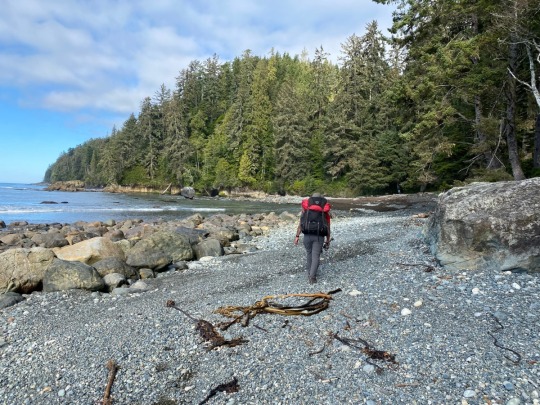
View On WordPress
0 notes
Text
How to Dominate Your Next Camping Trip: The Ultimate List of Must-Have Gear!
Camping is a great way to escape the hustle and bustle of everyday life and enjoy the great outdoors. Whether you’re a seasoned camper or a beginner, it’s important to have the right gear and supplies to make your camping trip a success. In this post, we’ll cover the essentials for a camp, including shelter, bedding, cooking equipment, and more.
Shelter The first essential for any camp is…

View On WordPress
#Affordable camping gear for budget-conscious adventurers#Best camping gear for car camping#Best lightweight camping gear for backpacking#camp#camping#camping essentials#Camping gear for families with kids#Camping gear for hunters and fishing enthusiasts#Camping gear for music festivals and outdoor concerts#Camping gear for pet owners and their furry friends#Camping gear for photographers and outdoor enthusiasts#Camping gear for solo adventurers#camping gears#Comfortable and warm sleeping bags for cold weather camping#Heavy-duty camping grills for outdoor cooking enthusiasts#High-quality camping chairs for outdoor relaxation#Insulated water bottles for camping and hiking#Lightweight and comfortable camping shoes for long hikes#Most durable camping tents for extreme weather conditions#Multi-purpose tools for camping and outdoor activities#Portable and compact cooking equipment for camping#Quick-dry camping clothes for humid environments#Solar-powered camping gear for eco-friendly camping trips#Waterproof backpacks for rainy camping trips
0 notes
Text
Top 5 Overnight hiking backpacks for under $200
Are you on a budget for your next overnight hiking trip but still need a reliable backpack? No worries! We’ve got you covered with the top 5 overnight hiking backpacks under $200 in no particular order
Teton Sports Scout 3400 Backpack
The Teton Sports Scout 3400 Backpack is an affordable option for those who need to carry a lot of gear. It has a roomy main compartment and several smaller…
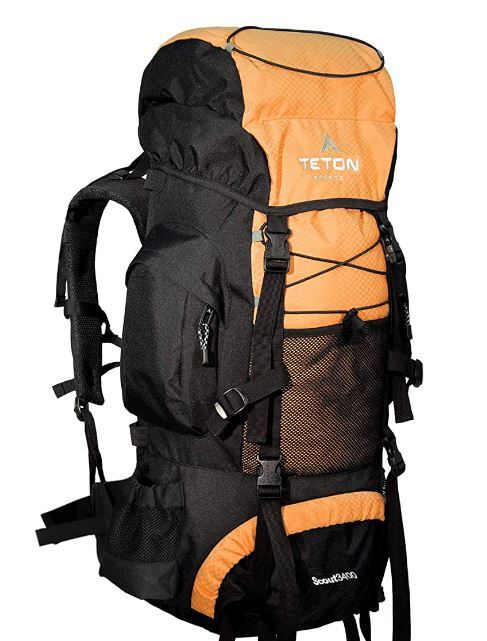
View On WordPress
#backpacks#budget#camping#High Sierra#Hiking#Kelty#Oregon hikes#outdoor gear#Outdoor Products.#overnight hiking#Teton Sports#under $200
0 notes
Text
On a recent evening, Micaela Maldano unfurled a blanket in a public park in El Jagüel, a poor suburb of Buenos Aires. On it, the 28-year-old arranged used clothes, a mate tea gourd, and a backpack—secondhand household goods she hoped to trade directly for food. “It’s getting harder and harder to eat,” Maldano said. “There are tons of people who are hungry.” She called the taste of meat, an Argentine staple, a “distant memory.”
Maldano is not alone. More Argentines are resorting to desperate measures such as bartering to put food on their tables as the country weathers an economic crisis. Financial tumult has long been part of life in Argentina, which ended 2023 with an annual inflation rate of more than 200 percent. But humble households such as Maldano’s have fallen into deeper precarity since far-right libertarian President Javier Milei was inaugurated last December. Maldano rents an apartment with her boyfriend, and the two rely mostly on his salary and informal trades to get by.
Days after taking office, Milei devalued the Argentine peso by more than 50 percent, and already sky-high inflation rates ascended even further. Since then, the cost of gas in Argentina has roughly doubled. Food prices have risen by roughly 50 percent, according to official government data. Health care costs have increased at a similar clip. Around the two-month mark of Milei’s presidency, Argentina’s annual inflation rate topped 250 percent, surpassing that of Venezuela to become the highest in Latin America.
As the price hikes intensified, Milei slashed subsidies for services ranging from transportation to utilities, honoring his campaign pledge to take a metaphorical “chainsaw” to public spending. The move put even more pressure on Argentines’ pocketbooks.
On the campaign trail, Milei—a political outsider—suggested abolishing Argentina’s central bank and dollarizing its economy, outlandish proposals that raised eyebrows among observers. But in office, his strategy has so far been more conventional: a fiscal adjustment plan designed to reverse longstanding government deficits through budget cuts and tax hikes. The president has described his austerity package, a significant departure from the Argentine tradition of reckless government spending, as “shock therapy.”
“It’s a fairly traditional approach to stabilization,” said Benjamin Gedan, the director of the Latin America Program at the Wilson Center. “That doesn’t mean it’s not dramatic and high stakes. … It’s an act of either political courage or political suicide.”
For everyday citizens, Milei’s austerity has been devastating. Salaries and pensions have not come close to keeping up with inflation. Workers’ purchasing power fell by roughly 14 percent month-over-month at the end of 2023, a contraction not seen in decades. Demand for food at soup kitchens is surging. A study released earlier this month from the Catholic University of Argentina estimates that the country’s poverty rate surpassed 57 percent in January. According to the same group of researchers, 49.5 percent of Argentines lived in poverty in December 2023, when Milei took over. At the end of 2022, 43.1 percent were considered poor.
Sebastián Menescaldi, an economist and the director of the Buenos Aires-based EcoGo consultancy, forecasts that the most painful period of Milei’s economic shock is yet to come. Starting this month, utility price hikes will combine with back-to-school costs to wallop families’ bottom lines. (In Argentina, summer breaks run from Christmas through February.) In March and beyond, “people will feel like they are drowning,” Menescaldi said.
As average Argentines suffer, Milei’s strategy has yielded some positive macroeconomic indicators. The peso devaluation has made imports more expensive, slowing them down—and decreasing the amount of money flowing out of Argentina. As a result, the cash-strapped central bank has started replenishing some of its dwindling dollar reserves. Meanwhile, the government posted an elusive budget surplus in January. And although monthly inflation reached a crushing 20.6 percent that month, it was lower than December’s rate of 25.5 percent.
But experts agree that the fiscal adjustments that made those trends possible could provoke a looming recession; Milei’s spate of spending cuts, they argue, will choke economic growth. The Institute of International Finance, an association of global financial firms, is predicting that the Argentine economy will contract 7.8 percent in the first quarter of this year. The International Monetary Fund, meanwhile, forecasts a 2.8 percent annual contraction.
Milei’s administration hopes that a recession will prove short-lived, but Menescaldi said that is unlikely. The economist is forecasting a “strong” upswing in unemployment and a further rise in the poverty rate. Because a gap persists between the official peso-dollar exchange rate and the black-market rate used by most Argentines, Milei might institute another inflationary currency devaluation in the future. Contributing to Argentina’s uncertainty are the governance challenges facing Milei, whose fledgling libertarian party occupies a minority of seats in Congress and holds no provincial governorships.
So far, the president has not displayed the political savvy needed to navigate that difficult political terrain. When a sweeping bill that would have deregulated swaths of the economy failed to become law due to congressional pushback, Milei inveighed against opposition lawmakers as “traitors” who “voted against the people.” Meanwhile, an attempt to pass labor law reforms via executive order was blocked by the courts. Enacting structural reforms as ambitious as the ones proposed by Milei “takes enormous patience, skill, and willingness to compromise,” Gedan said. “It’s not clear that [Milei] has those.”
Milei has drawn criticism for his apparent lack of focus on the nation’s woes. Recent headlines in Argentina have fixated on an ongoing feud between the president and a leftist pop star, who criticized cuts to public funding for the arts and described Milei’s rise as “dangerous.” And at the end of February, Milei flew to the United States to speak at the 2024 Conservative Political Action Conference alongside other far-right Trumpian acolytes.
Still, recent public opinion surveys show a majority of Argentines continue to support Milei. A poll released at the end of February pegged his approval rating at 52 percent, higher than any other national politician. The president has placed responsibility for households’ mounting economic difficulties on his “inheritance” from Peronist predecessors, and the blame game seems to be working. “He still retains a very robust amount of support,” said Federico Zapata, a political scientist and the director general of the polling firm Escenarios. Menescaldi added, “Argentine society largely agrees that this fiscal adjustment is something that we had to do.”
Time will tell whether the public will remain on board with Milei’s reforms as the standard of living deteriorates. Resistance is already building: It took Argentina’s largest labor union just seven weeks to call for a general strike in opposition to Milei’s government, which took place in January. Rail service workers, health care workers, and government employees walked off the job for additional work stoppages in February. Teachers’ strikes have already disrupted the beginning of the school year.
Some experts worry that anti-Milei mobilization could escalate into full-blown social upheaval if economic conditions fail to turn around. On the street, everyday Argentines have begun making concerned references to the 2001 debt crisis, which led to civil unrest and bloody riots. “I think there are going to be lootings, and just really tough times coming up,” Maldano said.
In Gedan’s view, Argentina is currently “teetering on the edge of a cliff.” If the Milei experiment ends in failure, it is difficult to envision Argentines giving another pro-market candidate a chance. “Most people agree that … everything is either going to collapse or, somehow, [Milei is] going to survive politically long enough to show the benefits of his policies,” Gedan said. “But just sputtering along on the verge of a crisis doesn’t seem to be possible anymore.”
6 notes
·
View notes
Text
Congaree National Park
Untitled
View On WordPress
#Appalachian Trail#backpacking#best things to do in#budget travel#hiking#national park#South Carolina#travel blog
0 notes
Text
Southeast Asia Backpacking Guide 2022

Are you exploring a one-of-a-kind Budget travel guide Europe and Southeast Asia? Well! we have come up with some brilliant backpack tips to help you prepare for your next trip.
Scroll down to read further!
Despite reading numerous backpacking or Travel photography blogs, it is hard to understand how can you make your travel easy and budget-friendly, especially when it comes to backpacking Southeast Asia.
So, to solve this issue, we have shortlisted some super-easy yet crucial things that you can consider to make your travel enjoyable and cost-effective.
Here is what you can consider:
1. Plan according to the weather
If you’re not an impulsive decision maker—then, consider planning according to the weather. This reason entirely sits within the tropics—it is broadly categorized by a humid and hot climate that diverges throughout the year. So, make sure that you have done your research and understand everything about the country or city’s weather before leaving.
2. Go local
Exploring Southeast Asia is every traveller’s bucket list and if you’re also one of those people then discovering perfect beaches and probing into the lush rainforest is a must. You can also consider taking the most less travelled road in Thailand or visiting the unheeded city of Battambang.
3. Budget carefully
Your Southeast Asia budget highly depends on what you’re exploring and how comfortable you want to be. For example, you can choose an expensive and fancy restaurant over yummy and authentic street food, if you want to spend more. However, if you’re exploring Southeast Asia, then it is best to try street food.

#Backpacking guide for beginners#Destination guide Santa Maria Valley#Destination guide Carmel#Camping guide Joshua Tree#Thailand travel guide#World travel guide#Hiking adventures Washington#Tiger temple travel guide#Travel tips & recommendations#Best vacation destinations#Backpacking in Europe#backpacking Southeast Asia#California adventure tips#Adventure travel blogs#Female travel bloggers#Travel photography blogs#Best travel blogs#Travel blog & adventure news#Budget travel guide Europe
5 notes
·
View notes
Text
#Travel#Adventure#Wanderlust#Destination#Explore#Backpacking#Journey#Trip#Tourism#Itinerary#Tips#Guides#Budget travel#Solo travel#Family travel#Luxury travel#Off the beaten path#Experiences#Culture#Photography#Food#Packing#Accommodation#Activities#Local#Road trip#Hiking#Beach#Wildlife
0 notes
Note
I'm wondering if I should take a (small) trip to somewhere in the UK during the term break... any recs?
When I was at Oxford, I likewise took advantage of those six-week breaks to do quite a bit of traveling, including a two-week trip to Scotland which I did on an extremely minimal budget and with everything I needed in one backpack. Please keep in mind that this was 2009 (I am. Old), and therefore almost fifteen years ago.
This itinerary included, more or less in this order, and with numerous day/side trips:
Edinburgh
Inverness
Isle of Lewis (in the Hebrides)
Isle of Skye
Glencoe
Glasgow
You can pick and choose depending on whether you want to see more cities, cultural sites, wilderness, etc. It might also depend on whether you can get around, as train strikes and other ongoing service disruptions can make it a headache to travel entirely by public transport. I don't know if they still have it, but I was able to buy a travel card for Scotland that covered almost all of my public-transit fares on train, bus, and ferry (that thing was worth its weight in gold). It is at least worth looking into some kind of weekly pass or seeing if there are discount travel options.
Likewise, I went up in the age before Airbnb, so I had to book regular B&Bs, which were generally affordable and run by nice people (one of them helpfully mailed my camera back to me after I accidentally left it in her room, and because once again, I am unbelievably old, I had to put cash in the post rather than just using PayPal to reimburse her for it). You will have more options, depending on how long you stay and where you want to go, but the nice thing about Scotland is that it is (well, usually) less expensive than England, and the North in general is cheaper.
If you don't want to go all the way to Scotland, I do recommend the North of England, which is gorgeous, huge, and empty. Northumbria, the Yorkshire Dales, Carlisle, Cumbria, Lindisfarne, Alnwick, etc are all doable by train from Oxford (once again, presuming that the train is uh, running), though it will take several hours and you will have to change services at least once. The Lake District is obviously gorgeous, though likewise touristy and more expensive at any time of year. That again will be somewhere to go if you feel like going out and hiking and enjoying the scenery, which may or may not be your bag. York is also lovely, if you haven't been there, and always worth a visit.
Wherever you go, make sure that you book train tickets in advance (as you've doubtless already learned that they scalp you on day-of) and check timetables. For example (though they may now offer it) when I went, some of the outlying Scottish isles/Hebrides did not have ferry service on Sundays, so if your itinerary relies on that, you might find yourself unavoidably delayed.
Have fun!!!
23 notes
·
View notes
Text
The Top 5 Hiking, Trekking and Backpacking Backpacks Under $100 on Amazon
Hiking is one of the best ways to explore nature and get your heart pumping while enjoying breathtaking views. However, to make the most out of your hiking excursion, you need the right gear. A good hiking backpack is a must-have accessory that you should consider investing in. With so many options available, finding the right backpack can leave you feeling overwhelmed. Fortunately, Amazon has a…
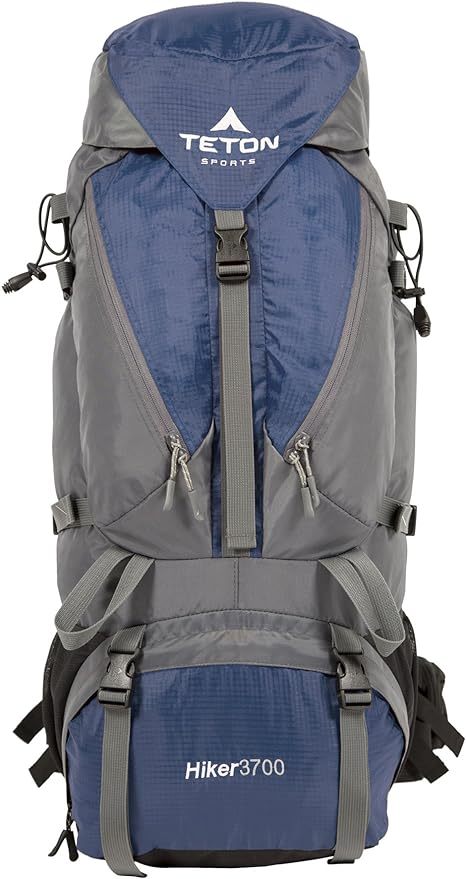
View On WordPress
#affordable trekking bags#Amazon hiking gear#Amazon trekking equipment#backpacking on a budget#best cheap hiking backpacks#budget backpacks#budget outdoor adventure gear#budget-friendly backpacking equipment#economical outdoor gear#inexpensive backpacking gear#quality budget backpacks#reliable cheap backpacks#top-rated Amazon backpacks#under $100 backpacks
0 notes
Text
Juan de Fuca Marine Trail Day 1: China Beach Trailhead to Bear Beach
And why you should hike the trail in the Fall
On October 4-6th my partner and I hiked 30 km of the 47 km Juca de Fuca Marine Trail. We hiked from the China Beach trailhead west to Sombrio Beach, covering the most challenging section of the hike. We got amazing weather and had not trouble finding a place to camp. It is a very busy trail during the summer months, and as certain campsites can get…
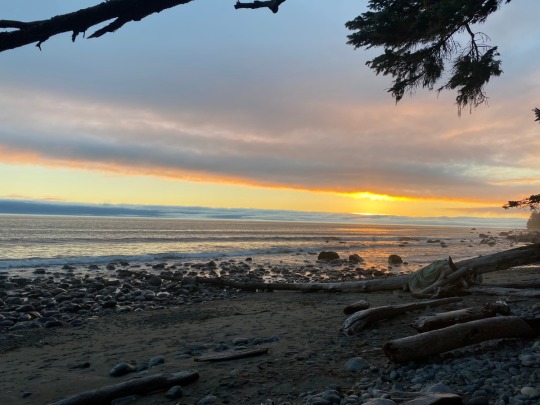
View On WordPress
0 notes
Text
Support Comes in Many Ways
So often we write about our experiences as hikers on the PCT. We describe places, challenges, feelings, and even a few frustrations. In a recent article posted by Julia Clarke she reminded me of another aspect of hiking the PCT or anywhere really. She outlines the ways we can support a thru hiker(s) or anyone who is getting on a trail for an extended period...five days, fifteen, or longer but not a full 4-5 months.
Rees, Jim, and I have benefited from the kindness of friends as well as strangers (at least they were initially). We have gotten rides, sodas, a much deserved and required shower, and more over the years. When I read Julia Clarke's article it reminded me of just how important it is to be a supporter of a hiker. Sure, we would all like to walk in someone else's shoes, at least vicariously, but when we can't we can still be a key part of someone's journey.
Clarke suggests six ways we can support a hiker. She specifies a thru hiker but in my mind I won't limit the support you and I can offer. These six suggestions all have relevance.
Logistics
As for any kind of short to long duration hike, finances, gear, rest days and transportation all must be coordinated.Whether or not you are planning a long distance thru-hike or a shorter hike it still takes a lot of research and effort.
A hiker needs to figure out getting to the trail, what they need for their entire journey, and how to get it to the right places. Calculating or at least guesstimating how far they’ll have to walk each day if they want to reach their goal or are trying to beat winter all come into play. How often breaks occur and stays in towns along the way all have to be budgeted for. When the hike is complete a hiker also needs to make a plan for how to get home.
Lastly, previous or prior knowledge can be very valuable to a hiker. If you happen to have specific knowledge of a specific hike or hiking/backpacking in general you may provide a valuable benefit to a prospective hiker. Assisting with logistics could be a great way to help someone with their hike. This is another way to share the 'load' with someone.
2. Re-Supply
Re-supply is an essential part of any longish hike. More and more we hear about hikers flying by the seat of their pants/hiking shorts and shopping as they go. Depending on local towns for re-supply, can be an expensive way to do things. Re-supply boxes on the other hand are mailed to a drop point such as a post office or store along the trail and held until the hiker arrives. Costs are expended on the front end of a hike and not throughout the length of a hike. Both shopping along the way and re-supply boxes can be effected by store and post office hours. Nevertheless, arriving to discover your re-supply box hasn’t made it can be disastrous. It can really be important that a hiker has someone they trust in charge of this getting boxes shipped on time to the right place. If you choose to offer this level of support you’ll need a space that you don’t mind being filled with boxes until they go out the door.
3. Transportation
Getting to and from a trailhead requires some help. These trailheads, especially for long distance hikes, are often in remote areas, so a hiker may need someone to give them a long ride at the beginning, end or one or more times along the way. The PCT is over 2,000 miles long so working out transportation is a key element. Yes, there is hitchhiking but as I have found it doesn't always work the way I planned, at least how I imagined it in my head.
4. Trail Magic
If you happen to live near a stretch of any long distance trail, one of the most feel good efforts you can make is to support a hiker by performing a little “trail magic.” Trail magic is basically just a hiking version of random acts of kindness. This usually entails providing hikers on the trail with something as ordinary as a soft drink or extraordinary in the form of a meal. Any and all is often greatly appreciated. Trail magic is typically something a hiker may enjoy while they’re hiking. I still remember finding some mandarins just south of Cajon pass.
Trail angels, can perform their act(s) anonymously and leave a camping cooler full of fruit or lemonade and soda on the trail, or even set up a table with food like home-cooked brownies. A trail angel might also offer hikers rides into town, buy them dinner, or even offer them a bed and a warm meal for the night. These offerings are acts of service, with nothing expected in return, and will make memories that hikers cherish forever, I know I have.
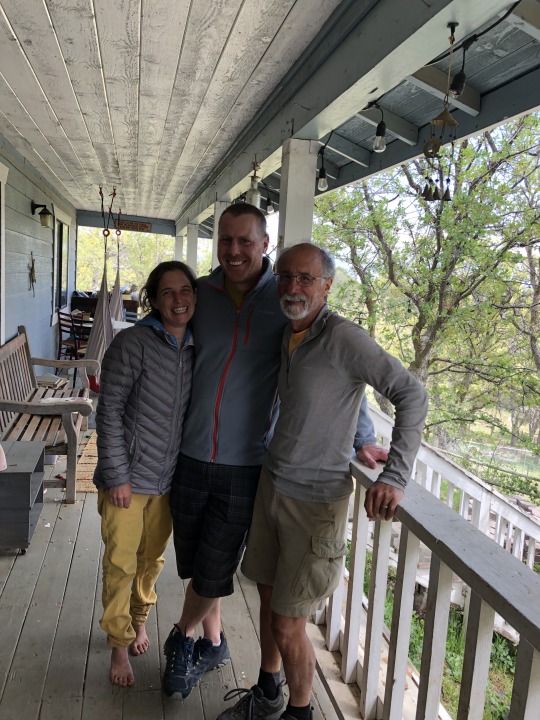
Two of my favorite Trail Angels in Tehachapi
5. Visit Them
If you know someone who is heading out on a long hike, a nice way to support them might be with a little company. Even though hikers on long distance trails often meet other hikers throughout their time on the trail, they might still appreciate seeing a friendly face show up to walk with them. If you’re not a hiker, you can still plan to meet them in town during one of their zero days. If you are a hiker then you may like joining them for a day hike an overnight or even a section hike over a few days to keep them company.
6. Trail Crew
Most hikers rely on there being a well-maintained trail so they can live out their hiking dreams. Trails don’t just create themselves. It takes a small army to build water diversion dams, cut back brush, clear trees and replace signage, and most of that work is performed by volunteers.
You can donate your time (or funds) to help maintain a section of a long distance trail. This could be a one time commitment or an annual or on-going role. Remember, this work can be physically demanding and usually requires you to be available for an extended period of time. It entails lots outdoor time with like-minded people and can be very rewarding. The PCTA manages many of these crews and they welcome people to join their efforts.
Whether or not you are embarking on your next great PCT or some other hiking adventure it is worth considering another way or ways to experience the PCT. Providing support to one or more hikers can be very rewarding on a variety of levels. You may be a believer in karma or you may simply want to take an opportunity to return a favor you enjoyed in the past. Either way offering support to one or more hikers can have a lasting impact for you and them.

A little something along the way
2 notes
·
View notes